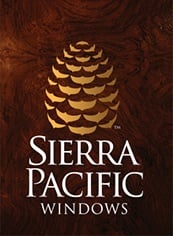
The Outlook of Natures Beauty
Something magically draws us to nature’s beauty. The magnificence of the Grand Canyon, sunsets on the beach, snow-capped mountains, the fluidity of water and the sounds of birds chirping have an inexplainable allure. We desire a connection to nature and living things. If we are not fortunate enough to live in these beautiful landscapes, we can make an effort to bring natural elements into our daily life. By definition, biophilic design incorporates intentional use of materials, views, daylighting, patterns, sounds and air movement to connect with nature. While rural environments may use views and natural scenery to augment an environment, many urban and suburban neighborhoods are devoid of natural beauty in our tract-built and apartment world ecosystem. The intentional and strategic use of gardens, trees, and water features can replicate nature’s beauty and enhance one’s outlook in these environments.
 Biophilia was first introduced by social psychologist Eric Fromm in 1964. It was later popularized by biologist Edward Wilson in his book Biophilia, published in 1984. For thousands of years, humans had a direct connection to the earth and landscape; they relied on it to sustain life. Although Biophilia is a recently coined term, it is rooted in our history, ancestry and primordial needs. Gardens and landscaping existed during the era of Babylonians. The Greeks and Romans used courtyards and water features to augment their living environments. Today, biophilic design incorporates the intentional use of visual, sensory, sound, air and water to influence the mind-body experience in manmade spaces.
Biophilia was first introduced by social psychologist Eric Fromm in 1964. It was later popularized by biologist Edward Wilson in his book Biophilia, published in 1984. For thousands of years, humans had a direct connection to the earth and landscape; they relied on it to sustain life. Although Biophilia is a recently coined term, it is rooted in our history, ancestry and primordial needs. Gardens and landscaping existed during the era of Babylonians. The Greeks and Romans used courtyards and water features to augment their living environments. Today, biophilic design incorporates the intentional use of visual, sensory, sound, air and water to influence the mind-body experience in manmade spaces.
A passion for nature in design
The emphasis of nature in architecture is not new. World renowned architect Frank Lloyd Wright used elements of biophilic design in his infamous residential structure called Fallingwater, which was designed in 1935. The modern looking house is set on a waterfall and is surrounded by woods. Butt-glazed corner windows allow for uninterrupted views of the tree canopy. Sounds of water rushing under the house and down the falls can be heard throughout.

A stairway from the living room was designed to access the water below. Interior wood detailing and furniture designed by Wright encapsulate biophilia on the interior.
In a 1957 Mike Wallace interview, Wright claimed that some people capitalize “g” in God while he capitalized the “n” in Nature. It was his obsession and religion. One could argue Wright’s creations augment nature’s beauty. In his words, he would say they “graced” the landscape.
As Wright’s work has shown us, intentional architectural design incorporates both the exterior and interior seamlessly. The use of fenestration products helps achieve this goal. They provide lighting, access to views, ingress, egress, ventilation, security, energy efficiency and design.
All the modern features of wood windows & doors
Utilizing a renewable resource with so many options and character like wood, is also an excellent choice to enhance biophilic design. Today’s wood window options vary from species, color, operation, cladding, and  compliment traditional to modern design. Gone are the chunky true divided lite mullions and small panes of glass that were once required with wood window construction. Sleek, clean, minimalistic lines have taken their place and compliment just about any contemporary design and styling. Bi-folding, multiple sliding panels, and in-wall pockets, hide panels from view when open, and leave a clean indoor-outdoor space to enjoy. Floor to ceiling glass walls open the view to the outside world. As Interior Designer Rose Tarlow aptly said: "If eyes are the windows to our souls, then windows are the eyes into the soul of a house."
compliment traditional to modern design. Gone are the chunky true divided lite mullions and small panes of glass that were once required with wood window construction. Sleek, clean, minimalistic lines have taken their place and compliment just about any contemporary design and styling. Bi-folding, multiple sliding panels, and in-wall pockets, hide panels from view when open, and leave a clean indoor-outdoor space to enjoy. Floor to ceiling glass walls open the view to the outside world. As Interior Designer Rose Tarlow aptly said: "If eyes are the windows to our souls, then windows are the eyes into the soul of a house."
Interior spaces can achieve biophilia with products and designs that mimic nature, also known as biomimicry. Natural lighting is often used to replace harsh artificial lighting, encouraging the occupant to stay. Native plants, landscaping, water features, and local materials such as stone are used in abundance. Non-linear, undulating patterns in landscape and rooflines provide a creative palette to choose from. The use of a fish tank, water feature, textures, artwork, natural stone, wood finishes, colors that imitate soil, grasses, and other landscaping are effective. Natural colored furnishings, wood or stone floors, wall features, complementary artwork and finishes can also contribute to the feeling of biophilia.
it's not all about beauty
The advantages of biophilic design far exceed the enjoyment of natural beauty - it has real health benefits as well. Medical research has proven that biophilic design improves cognitive function which includes our mental agility, memory, and our ability to learn and think creatively and logically. It also alters mood and decreases stress, leading to the relaxing of our muscles and lowered blood pressure.
Incorporating natural products can dramatically enhance our living and work spaces while improving our quality of life.

Photo credits for blog: photo 1 Matthew Thomas Architecture, Arcadia Custom Builder and Erik Kruk Photography, photo 2 Jirsa Construction and Nick Laessig photography, photo 3 Frank Lloyd Wright - Fallingwater, photo 4 Matthew Lechowick Design, Kinetic Partners and Kat Alves Photography, photo 5 WILLIAM / KAVEN ARCHITECTURE, Jeremy Bittermann JBSA images.


